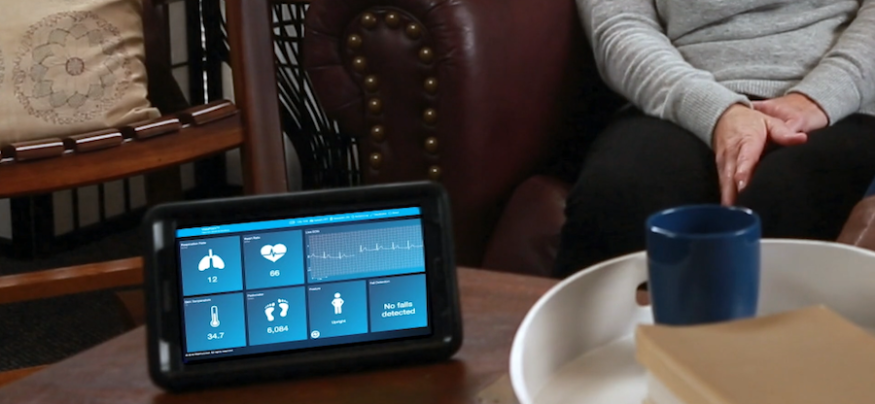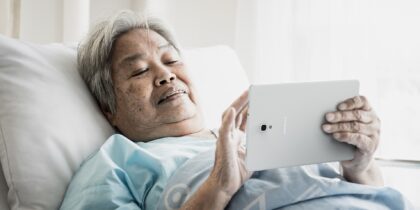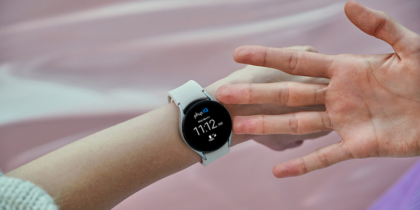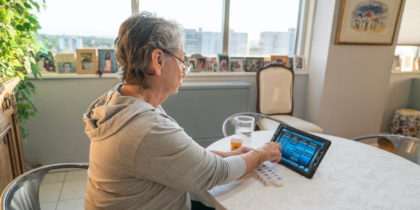What if being admitted to the hospital meant not having to stay in the hospital at all? What if you could leave the hospital earlier, and still receive care via remote monitoring? What if hospital readmissions could be drastically reduced, thanks to healthcare technology innovations?
More than 7 million patients worldwide were participating in remote monitoring programs in 2016, according to Berg Insight, with the number forecast to exceed 50 million by 2021.
This revolution in remote monitoring is being ushered in by technology providers like VitalConnect, a leader in continuous monitoring solutions for in-hospital and at-home patient monitoring.
Remote Monitoring Innovation
VitalConnect is the maker of the VitalPatch, an FDA-cleared wearable biosensor. Patients wear the lightweight, wire-free sensor discretely on their chest. It sticks on like an adhesive bandage and can be worn for up to five days. Since it’s wireless and water-resistant, patients can move freely and even shower during wear.
The sensor continuously takes eight physiological measures: electrocardiogram, heart rate, heart rate variability, respiratory rate, skin temperature, body posture, fall detection and activity. Data from the sensor streams continuously to a mobile device and is uploaded to the cloud. Caregivers can view the patient data in real time or as needed using the Vista Solution, a platform that shows caregivers patient information.
How Mobile Solutions Improve Patient Experience
Get your free guide to enhancing the patient experience with mobile technology. Download Now
VitalConnect recently expanded their solution by launching VistaTablet. The company uses a custom-configured Samsung Galaxy Tab E, known for its durability and long battery life. Using the tablet, healthcare providers securely access vital patient data. The tablet serves as a handheld mobile relay device that securely hosts and transmits the readings collected by the biosensor. Healthcare providers can view the data through the Vista Solution platform and analyze patient information whether they are in the hospital or at home.
Healthcare Technology Changing the Nature of Hospital Care
These solutions are changing hospital care as we know it. Nersi Nazari, Ph.D. and CEO of VitalConnect, offers a vision of the future: “Think of a hospital not as a building housing patients within its walls. Instead think of it as a center of care that monitors patients wherever they may be.”
The Vista Solution works with three core use cases:
1. Current patients inside a hospital. Patients can be fitted with the VitalPatch biosensor. Their data flows continuously to the platform. Instead of constantly checking on patients in room after room, waking them up from sleep to gather vital statistics, nurses can monitor those stats via the platform. Notifications can indicate patients who need nurse attendance, keeping the nurses focused on their most important task: providing quality care.
Nazari notes that nurses are great advocates for this system. “Nurses are trained to provide patient care,” he said. “They’d rather spend time doing that than disturbing patients’ sleep to take their vitals. This makes their job easier and allows them to focus on patients that need the most attention.”
2. Patients recently released from the hospital. The first 30 days after patient release are the most critical — this is the period when patients have the highest probability of readmission. For some patients, 30 days of monitoring using the biosensor may be the answer to improve care and reduce the chance of readmission. By continuously monitoring vital statistics, healthcare providers are alerted to potential health issues in real time. They can respond by having the caregiver visit the patient or by remotely updating the prescribed care plan to prevent the issue from becoming more serious.
3. The “admit to home” option for care. Some patients arrive at a hospital feeling ill, but not enough so to be admitted. Instead, they can be fitted with the VitalPatch and stay home while health providers monitor data.
Brigham and Women’s Hospital in Massachusetts served as the trial site for this innovative biosensor use case. Early phases of the trial demonstrated a 52 percent reduction in hospitalization costs as well as improved patient outcomes. Those improvements included happier patients, better quality of life and increased safety.
Dependable Technology, Reliable Partners
“Our mission is to save lives by providing elegant healthcare solutions,” says Nazari. To achieve that mission, VitalConnect seeks out trustworthy technology partners with proven track records in the highly regulated healthcare sector. Samsung is experienced with the specific concerns of healthcare solution providers, and its Knox platform and Knox Configure solution allow it to deliver a highly secure, customized mobile platform.
“Samsung devices are reliable and work with FDA-cleared Class 2 devices like ours. Once devices are approved, any changes or updates require reevaluation. The Samsung platform allows us to plan for updates on our schedule rather than being forced to accept updates,” explains Nazari.
The custom-configured Samsung Galaxy Tab E provides a durable form factor that can stand up to the demanding healthcare environment. Additionally, VitalConnect partnered with Integron, a managed service company that serves the connected healthcare industry. Integron sets up the mobile devices and ensures they remain secure, up-to-date and FDA compliant. The simplicity of program execution is appreciated by hospital administrators, who can simply hand out the devices to patients knowing that they will be ready to go out of the box.
Learn more about how Samsung’s portfolio of mobile devices can help tailor your own elegant healthcare solution.








